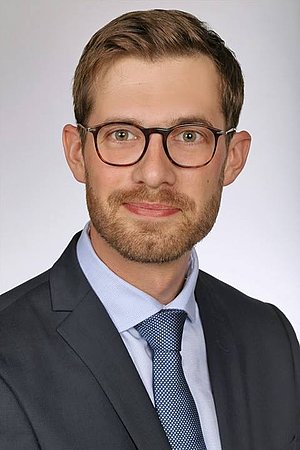
Spatial distribution of CNS macrophage subtypes and their implications for glioblastoma growth and resilience to therapy
Glioblastomas (GB) are the most common and most malignant primary malignant brain tumours in adults. Despite extensive therapeutic intervention including surgery, radiotherapy, and chemotherapy, the median survival in trial cohorts remains limited to about 17 month.
Molecular heterogeneity underscores the complexity and challenge in treating GBs. Another factor contributing to the high degree of inter- and even intratumour heterogeneity is the tumour’s microenvironment. GBs arise in a complex tissue microenvironment composed of diverse stromal cells like endothelial cells, infiltrating and resident immune cells and other non-neoplastic glial cells. The majority (30-50%) of the non-neoplastic cells in the microenvironment of a bulky tumour is composed of microglia and macrophages, which infiltrate the tissue and are subsequently altered by their bidirectional interaction with tumour cells. Glioma-associated macrophages (GAMs) are a key-factor in glioma pathogenesis as they are prone to release a variety of factors facilitating tumour growth and surrounding tissue necrosis by providing a pro-tumourigenic environment.
Despite big efforts to transfer immunotherapy strategies to clinical application, which have proven to be of benefit in preclinical models, very little progress has been made especially in comparison to other solid tumours. For example, hope in immune checkpoint blockade by PD-1 inhibition or targeted therapies against TGFβ and CSF-1R could so far not live up to expectations in clinical trials. One of the reasons for failed immunotherapy trials could be the heterogeneity of the TME between GB subtypes. As a result, a better and more profound understanding of the TME composition and biology that either promotes or inhibits GB progression is crucial in order to select patients which might benefit from certain therapies more likely and also in order to improve our understanding of treatment related toxicities.
To that end we apply a spatial omics approach to resolve the TME of high grade gliomas using PhenoCyclerTM (formerly known as CODEXTM). Furthermore, it has been shown that GB cells initiate a widespread network among each other linked by so called tumour microtubes. The integrity of these microtubes is crucial for tumour survival and resilience to therapy. In a second part of this project using multiphoton imaging we aim at studying the interaction of resident macrophages and microglia with these microtubes and their contribution to tumour-network plasticity.
Prof. Fuhrmann
https://www.dzne.de/forschung/forschungsbereiche/grundlagenforschung/forschungsgruppen/fuhrmann/forschungsschwerpunkte/
Prof. Salomoni
https://www.dzne.de/forschung/forschungsbereiche/grundlagenforschung/forschungsgruppen/salomoni/forschungsschwerpunkte/
Prof. Herrlinger
https://neurologie.uni-bonn.de/sektionen/klinische-neuroonkologie/forschung?h=22;&o=0
